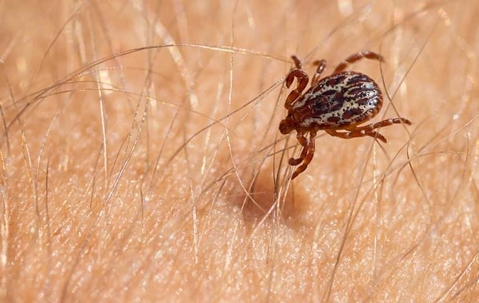If there is grass on your property and trees in your yard, there is a chance that you have ticks close by. In our area, ticks are common, and every late spring or early summer, many of us start having unpleasant encounters with these creepy crawlers.
Ticks are arachnids, closely related to spiders and scorpions, and they are an unwelcome fixture common to every state. In Illinois, there are 16 species of ticks, but in our area, you're likely to run into:
American dog ticks
Blacklegged (deer) ticks
Brown dog ticks
All ticks, like other arachnids, have an outside skeleton, eight legs, and no antennae. Their bodies are flat and oval-shaped, with the species common in our area ranging between 1/8 and 5/8 of an inch in size.
Most ticks feed on animal blood, with the ones in our area holding a special fondness for humans and dogs. As with most other blood-feeding pests, ticks can transfer a number of infectious diseases, making a tick infestation on your property something you should be concerned about.
Let's take a closer look at how ticks get on your property, what diseases you should be watchful for if you've been bitten, and what strategy Moline pest control professionals recommend to get rid of ticks that are making their home in your backyard.
How Common Ticks Get Around
Most of the time, ticks will make it onto your property by hitchhiking on the back of a wild animal such as a rat, deer, or squirrel. A female tick will detach and lay eggs, sometimes thousands, which will hatch into larvae, also called seed ticks. Larvae will climb up on tall grass or low vegetation, wait for a suitable host to walk by, and drop on them.
Adult ticks will often utilize the same strategy but are a lot more mobile, capable of getting down on the ground and tracking down their next victim using the smell of carbon dioxide mammals produce as a target.
Tick Bites Can Be Very Dangerous
Ticks carry and spread a number of blood-borne diseases and parasites, such as:
Tularemia
Rocky Mountain Spotted Fever
Tick paralysis
Lyme disease
Anaplasmosis
B. miyamotoi disease
Ehrlichiosis
Babesiosis
Powassan virus
In addition, the removal of a tick from your skin can result in the head breaking off inside your skin, possibly resulting in an infection.
Five Helpful Tips To Prevent Tick Bites While Out And About
An effective tick control strategy is centered around removing places they can hide in your yard and keeping them away from their favorite food sources, namely you and your pets.
Keep the grass in your yard cut down short.
Prevent wild animals from getting on your property by utilizing fencing.
Cut down overgrown vegetation.
Wear long sleeves and pants during the tick season.
Use tick-repellent sprays when going into areas likely to be populated by ticks.
The key to containing a tick infestation is getting professional help at the first sign of these pests in your yard—before their numbers explode into thousands. Ticks multiply fast. A single female is capable of laying thousands of eggs, each of which can patiently wait for over a year until its first meal.
The Most Effective Tick Control Solution For Your Yard
At Quick-Kill Pest Eliminators, we've been helping central and north-central Illinois residents keep their backyards tick-free since 1929. We are family-owned and operated and specialize in comprehensive pest control treatments that ensure your Moline home is tick-free and stays that way!
Our experienced pest control technicians know the signs of a tick infestation to look for and will make sure your property is free of adult insects and their eggs.
If you're staying out of your backyard because of a tick infestation, give us a call today to learn more about our tick control services in Moline.

